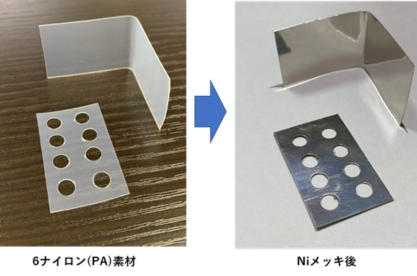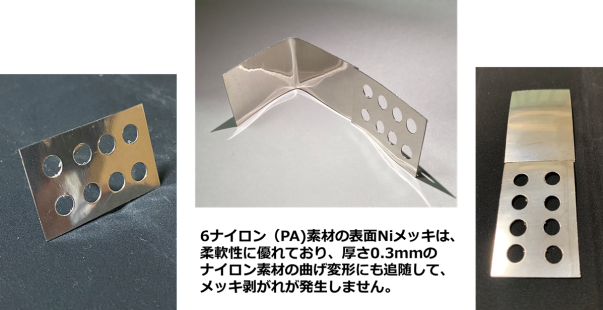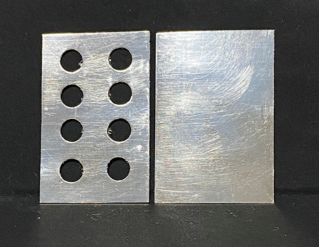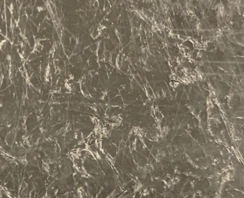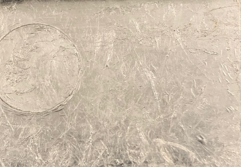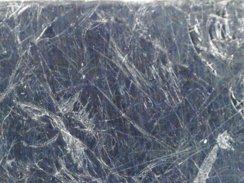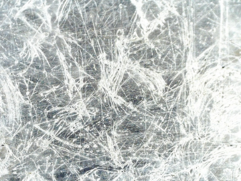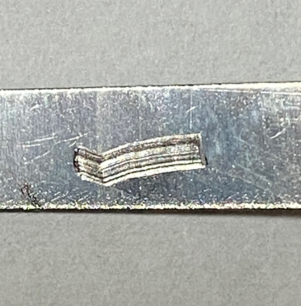We have recently developed Ni-B plating on 6-nylon (PA6) / 66-nylon(PA66) material.A strong plating film can be formed by using a special bonding material on the surface of 6-nylon (PA6).
In addition, the plating layer also has flexibility that follows the flexibility of nylon, and it is expected that
the range of applications of nylon materials will expand.Ni-B plating on 6-nylon (PA6) / 66-nylon(PA66) material, which has excellent functionality (strength, heat
resistance, workability, etc.) and economy, has been plating using the anchor effect (surface etching
using hexavalent chromium). ) Was performed, but plating on nylon was not often performed due to
environmental problems, RoHS directive, green procurement, etc. In addition, a method of embedding a
catalyst etc. in the nylon material has been devised, but the product application was limited in terms of
cost and the original convenience of the material.The Ni-B plating on the 6-nylon / 66-nylon material developed this time does not depend on the method
of forming the nylon material at all. Ni-B plating can be performed without changing the shape of a
punching board or deep sink.Therefore, the function can be improved without changing the shape of the current product.Our Ni-B plating has high Ni purity and can exhibit the original metal surface characteristics of Ni with
higher purity than general Ni-P plating.This high-purity Ni plating is also expected to be effective as an EMI shield component. |
■ Ni-B plating on 6-nylon(PA6) material (example) |
|
It is possible to form Ni-B plating with a thickness of about 1 μm on thesurface of 6-nylon (PA6) material. |
| |
| |
|
Surface Ni plating on 6-nylon (PA6) material can beplated on both processed products such aspunching boards and molded products. |
| |
|
| |
■ Ni plating to 6 nylon (glass fiber included) |
|
Surface state before plating |
|
Surface condition after Ni plating |
●6 nylon (glass fiber included) |
|
⇒ |
|
●Microscopic observation |
|
⇒ |
|
|
■ Evaluation of flexibility of Ni-B plating on 6-nylon material (bending deformation) |
This is a video showing the flexibility of a 6-nylon (PA6) sheet material with Ni-B plating on the surface.It follows the bending deformation of the nylon material with a thickness of 0.3 mm, and no platingpeeling occurs.It can also handle weight reduction of parts and deformation of materials.
Video |
 |
|
|
|
|
■ Evaluation of flexibility of Ni-B plating on 66-nylon (bending deformation) |
Electroless Ni-B plating on 66 nylon (PA66) is now possible.Until now, Ni-B plating on 6 nylon (PA6) was stable, but it was difficult to stabilize plating on 66 nylondue to its molecular structure.This time, we have developed a new processing technology in collaboration with Toshiba Materials Co.,Ltd. and succeeded in stable electroless Ni-B plating on 66 nylon (PA66).Even if the 66 nylon sheet is curved as shown in the video, it has the property of following the platedsurface without cracks.
Video |
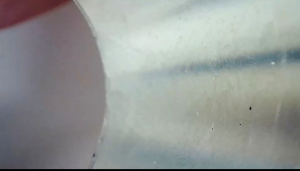 |
|
|
|
|
■ Ni-B plating pencil hardness test |
A pencil hardness test was conducted on a 6-nylon (PA6) sheet material (thickness 0.3 mm) that hadbeen surface Ni-B plated (thickness 1 μm).The result at 9H hardness bites into the 6-nylon (PA6) material as shown below, but the plating does notpeel off with a pencil.We believe that the plating strength is good. |
|
|

